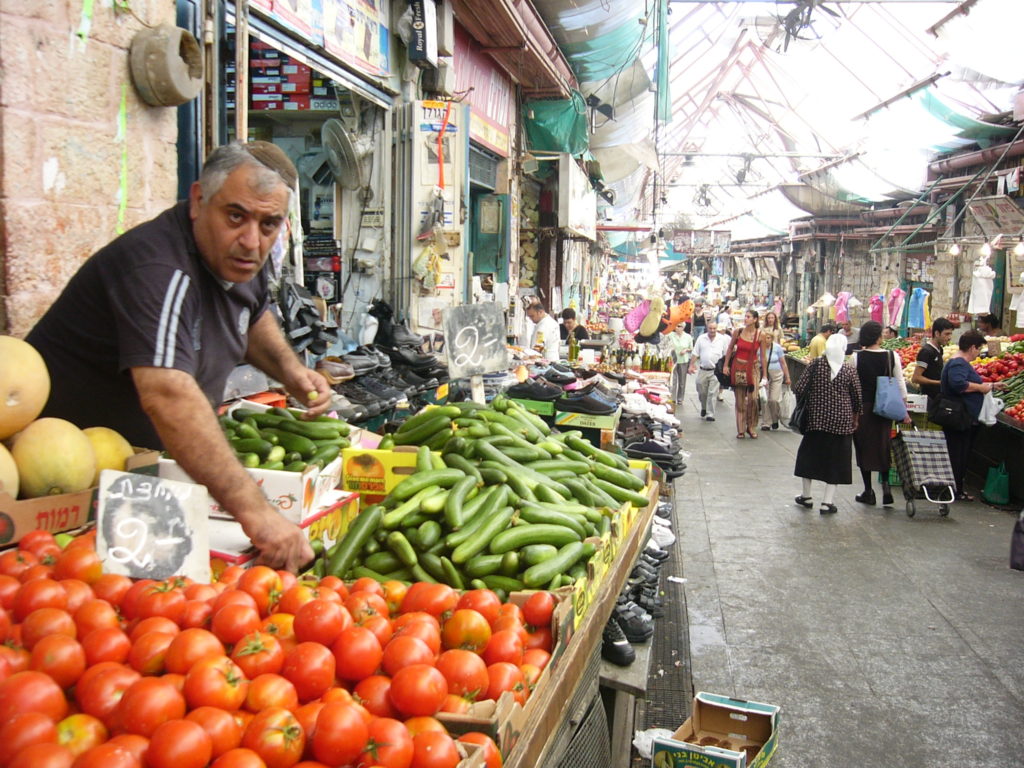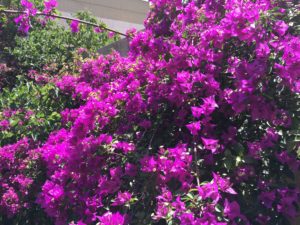Shopping at the giant open air market for Shabbat, sipping Arak amongst Israeli soldiers and dancing in services: It’s the weekend in Jerusalem. Here, Shabbat will carry you away from ordinary time, if you let it.
From the moment I arrived in Jerusalem, it was clear that I have come to live in a place that is like nowhere else on Earth. Hebrew is spoken everywhere, havdalah candles and rugelach can be found in the supermarket. When we stand to pray in a synagogue we still face east but our focus—the Western Wall, the last remnant of the Temple—is less than a mile away.Because Jerusalem is essentially a religious city, Shabbat sets the rhythm of the weekend. Here are some moments from my first few weekends in Ir Hakodesh, the Holy City.
Thursday, 6:00 p.m. Like most Israelis, I am done with the workweek and ready to enjoy sof hashuvah, the weekend. I hear my upstairs neighbor is running the vacuum and I see a woman standing on an apartment balcony of the building next door shaking a rug. Shabbat is more than 24 hours away, but people here seem to have a lot to do to get ready every week.
Thursday, 8:30 p.m. Since I know I’ll be eating at home during Shabbat, I treat myself to some amazing pizza and Israeli beer at Bardak, a relaxed little restaurant in my neighborhood. The place is hopping, so I am seated at the bar next to a row of IDF soldiers in uniform, which is a mixed group of young men and women. There is recorded music playing Hebrew songs with an Arabic beat at first and then a surprising segue to Dolly Parton’s “Jolene.” As I finish my pizza, the bartender offers me a shot of Arak, an anise-flavored liquor that is prevalent in the Middle East, and I share a l’chaim with the wait staff.
Friday, 8:15 a.m. I awaken with a vaguely uneasy feeling that Shabbat is coming soon and I might not have enough food in the house. As soon as I finish my coffee, I head out to the Mahane Yehuda Market, better known as “The Shuk,” which can best be described for Twin Cities readers as the Minneapolis Farmer’s Market on steroids. Anything and everything you may want for your table or your home is probably available here. A lot of people had the same idea I did, and the market is very busy before 10:00 a.m. I load up on produce and a few things I need for the apartment. Before heading home, I stop and listen to a man playing the oud, which is a stringed instrument native to the Middle East.
Friday, 1:00 p.m. I decide to take a break from shopping and cleaning to sit and have lunch at a sidewalk café in the leafy Rechavia neighborhood. Because it’s the weekend, there are a lot of people strolling along the street and no one seems in a hurry to be anywhere.
Friday, 5:00 p.m. I meet several of my classmates at the First Station, a dining and entertainment complex in the original Jerusalem train station, for Kabbalat Shabbat services. Nava Tehila, an egalitarian and pluralistic prayer community, offers a soulful and musical open-air service that draws about 200 people. It is striking to see a mixed gathering of Orthodox and Liberal Jews, along with a number of apparently secular people who simply enjoy good music. The mood is joyous, as people pray together with open hearts, clapping hands and dancing feet. This is such a Jerusalem moment.
Saturday, 11:00 a.m. I take a stroll around the city and am struck at how few cars are on the streets. In neighborhoods off the main thoroughfares a few people are strolling down the middle of the street. Without bus service on Shabbat, and the vast majority of business closed, Jerusalem becomes quiet. At first it seems a bit eerie to me, but I can’t help noticing how good it feels to slow down.
The weekend in Jerusalem is life on Jewish time. In America, many of us have to struggle against the demands of work, school and near-constant electronic connection to keep Shabbat in some fashion. But here, Shabbat will carry you away from ordinary time, if you let it.
This is the second in a series of posts about life in Jerusalem through the eyes, ears and experiences of a first-year rabbinical student. The first post can be found here.
Photo and Videos: Meir Bargeron



